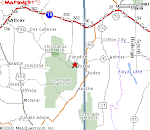We got up early for an introductory lecture on biodiversity. I learned that caterpillars are not only one of the largest and most diverse groups of animals, but are also the main consumers of plant life. I thought it would have been something bigger like horses, deer, or some other herd creature, anything but the caterpillar. So, there are these wasps that lay eggs in caterpillars. The eggs hatch and eat the caterpillar as it eats the leaves of some tree. When they are ready they pop out of the caterpillar, emerge as adults, and consume the rest of the caterpillar. It turns out that this disgusting habit is a good thing because if the caterpillars had their way, they would eat every leaf out there, like the plagues of biblical proportion. Without plants, biodiversity plummets. So, the lowly caterpillar is more important to biodiversity than one might think!
The rest of the morning was spent at the Sonoran Desert Museum, familiarizing ourselves with the native plants and animals, and the heat. It reached 114 degrees today. After lunch, we went out into the desert and began collecting caterpillars by putting a sheet under a bush and whacking its branches with a stick. Our team found 7 teeny, tiny caterpillars about the size of ice cream cone sprinkles. We were very excited.
The day ended with another lecture about the different types of caterpillars. Tomorrow we are off to a very remote site, higher in elevation and a bit cooler. There, we will begin searching in earnest, adding to years of data being used to answer questions about climate change, biodiversity, and the caterpillar.
















I feel like I'm there with you, as you write and describe the caterpillars and the plant life. Do you find that you are getting used to the heat? Are all the other teachers from the same background as you? This is exciting! Keep on writing!!
ReplyDeleteHow does one dissect something the size of an icecream sprinkle?
ReplyDelete